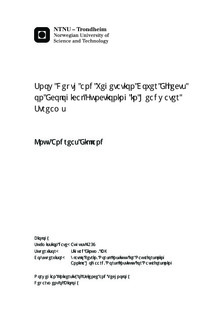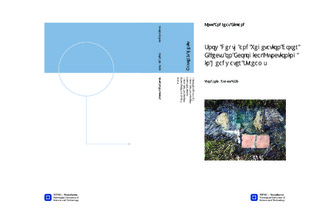| dc.description.abstract | I studied the possible effects of reduced snow depth on ecological functioning including ecological processes like algal growth and the rates of grazing and decomposition in boreal headwater streams in the Dovre Mountains in Central Norway. The streams drained catchments of three vegetation types, forest, shrub and tundra. Measurements of ecological processes (leaf-litter decomposition, algal growth and grazing rates) and analysis of stable isotopes (SIA) were performed in manipulated streams and in unmanipulated control streams.
Leaf-litter decomposition by leaf-eating macroinvertebrates and microbial agents was assessed using enclosed mesh bags. Algal growth and grazing rates by macroinvertebrates were assessed by measuring algal growth (as the accrued amount of Chlorophyll a) on pairs of unglazed ceramic tiles placed onto the stream bed. The trophic importance of riparian vs. autochthonous food sources that support macro-invertebrate primary consumers was analyzed using dual stable isotope signatures, i.e. I measured stable carbon (δ13 C) and nitrogen (δ13 N) isotope profiles for three carbon and nutrient sources and five primary consumers.
The results showed that specialized macroinvertebrates contributed in a much greater extent than microbial agents to rates of decomposition by leaf litter in all vegetation covers. Further, that the amount of shading and snow depth manipulation may affect decomposition rates in streams draining forest and tundra positively and negatively, respectively.
A drought-period the summer after snow depth manipulation caused most of the studied streams in various degrees to dry in. Hence, the number of measurements was not sufficient to test whether primary production or grazing rates varied with vegetation cover or by manipulation of snow depth. All macro-invertebrates species differed in their isotopic profile. However, I was unable to test whether these differences was due to different diets due to the limited variation of isotopic profiles of potential food sources.
The results of this study did not show that a reduction of snow cover would cause alterations of ecological functioning in streams draining different vegetation covers. However, both vegetation cover (shading) alone and the interaction of vegetation cover and manipulation were significant for decomposition of leaf-litter. Further, it supports the important role vegetation cover is expected to have on important processes by affecting the micro climate along the stream and through input of organic materials. Hence, for us to understand and, if possible, predict how stream ecosystems responds to local and regional changes of climate and land use, there is still a need of more knowledge about these processes. | |

